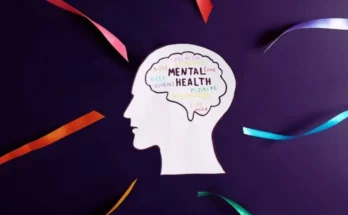Make the timeless decision to live a better lifestyle at the beginning of the new year. These ten useful health suggestions will help you get started on the path to a healthy lifestyle in 2025.
1. Eat a healthy diet
A balanced diet, including whole grains, legumes, nuts, fruits, and vegetables, should be consumed daily by adults. Strategies include eating in season, snacking on fresh fruits and vegetables, and incorporating vegetables into meals. This can help reduce the risk of malnutrition and noncommunicable diseases like diabetes, heart disease, stroke, and cancer.
2. Consume less salt and sugar
To reduce salt intake to 5g daily, one teaspoon, limit salt intake in meals, remove high-sodium condiments, remove salt from the table, avoid salty snacks, and opt for low-sodium products instead of salty ones.
Excessive sugar consumption increases tooth decay and weight gain. The World Health Organization recommends reducing free sugar intake to less than 5% of total energy intake for health benefits. Limiting sugary snacks, candies, and beverages can help reduce sugar intake.
3. Reduce intake of harmful fats
To avoid weight gain and chronic diseases, the World Health Organization (WHO) recommends consuming less than 30% of total calories as fat. Unsaturated fats are better than saturated and trans fats, and both should be swapped out for unsaturated fats. Saturated fats are present in fatty meat, butter, palm oil, cream, cheese, ghee, and lard, whereas unsaturated fats are present in fish, avocado, almonds, sunflower, soybean, canola, and olive oils. Trans fats are found in baked and fried foods, pre-packaged snacks, and cooking oils and spreads.
4. Don’t smoke
Tobacco smoking leads to chronic diseases like lung disease, heart disease, and stroke and can kill both smokers and non-smokers through secondhand exposure. Quitting smoking offers immediate and long-term health benefits, while non-smokers should fight for their right to breathe tobacco-smoke-free air and avoid smoking altogether.
5. Be active
Physical activity involves skeletal muscle movement that requires energy expenditure, including exercise, household chores, travel, and recreational activities. For added health benefits, those between the ages of 18 and 64 should increase their weekly moderate-intensity physical exercise to 300 minutes. The amount of physical activity depends on age group.
6. Check your blood pressure regularly
Hypertension, or high blood pressure, is often overlooked due to its “silent killer” nature. Diseases of the heart, brain, kidney, and other organs can result from uncontrolled hypertension. Regular blood pressure checks by a health worker are crucial for prevention and control. If your blood pressure is high, seek advice from a health worker for proper management.
7. Follow traffic laws
Road crashes cause over one million deaths and millions of injuries globally. Governments can prevent traffic injuries through strong legislation, safer infrastructure, and improved post-crash care. Individuals can also prevent crashes by following traffic laws, using seatbelts, using child restraints, wearing helmets, not drinking and driving, and not using mobile phones.
8. Take antibiotics only as prescribed.
Antibiotic resistance is a significant public health threat, causing bacterial infections to become harder to treat, leading to higher medical costs, prolonged hospital stays, and increased mortality. It’s crucial to only take antibiotics prescribed by a qualified health professional, complete treatment days, and never share them.
9. Clean your hands properly
Hand hygiene is important for everyone, not just healthcare professionals. Infectious diseases can be stopped from spreading by having clean hands. When your hands are obviously dirty, you should either handrub them with an alcohol-based solution or wash them with soap and water.
10. Have regular check-ups
Frequent examinations can assist in identifying health issues before they arise. When health problems are discovered and diagnosed early, there is a greater possibility that they will be treated and cured. To learn more about the health services, exams, and treatments available to you, visit the closest medical center.



